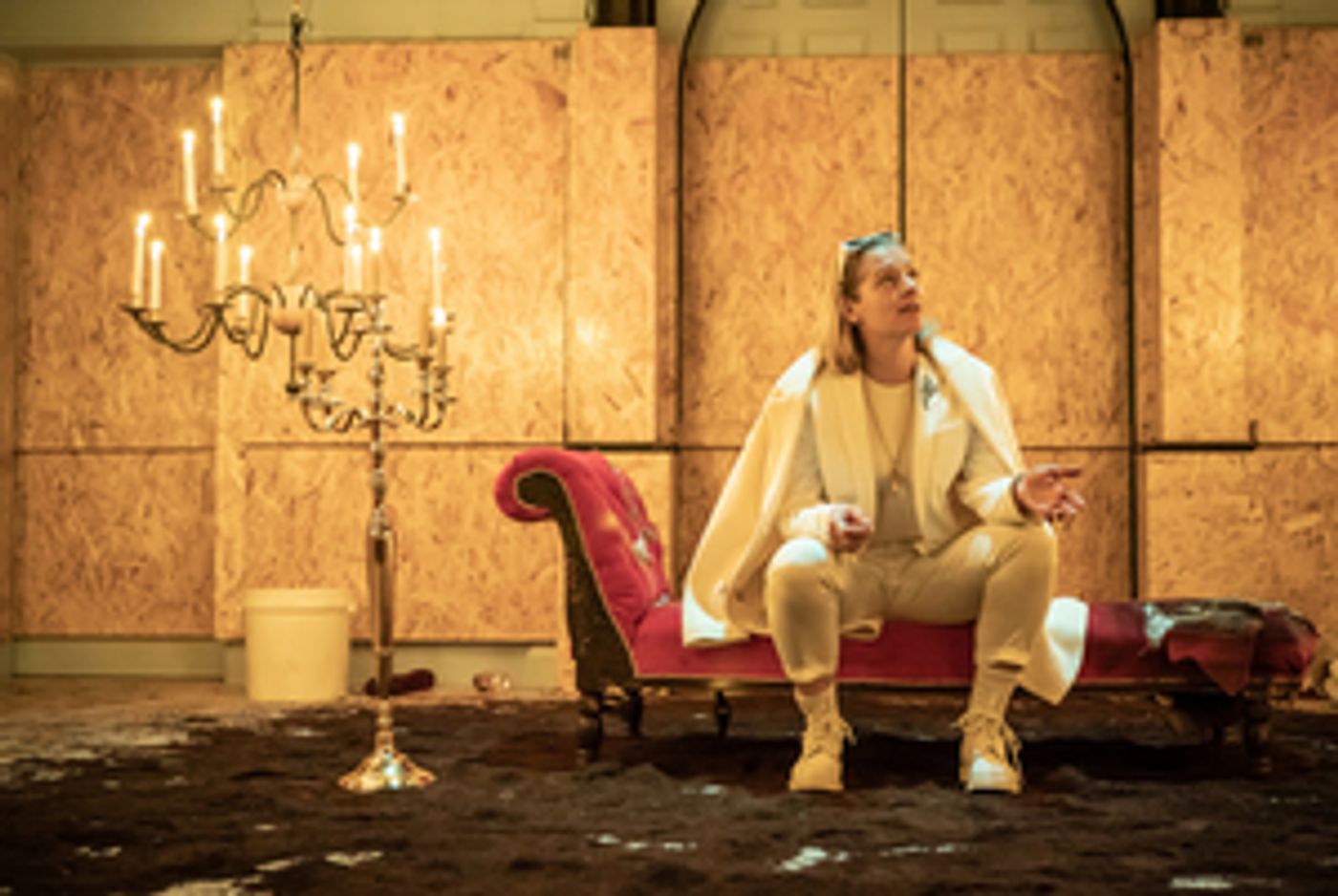Review: RICHARD III, Sam Wanamaker Playhouse

![]() What you might not expect when sitting down in the Sam Wanamaker Playhouse, a replica Elizabethan indoor theatre, is to see the titular character of Richard III enter wearing football kit. Granted, it's an unusual twist. Representing a companion to a condensed Henry VI (which squishes three plays into one), what Richard III makes clear from the beginning is that the game to become king is just beginning.
What you might not expect when sitting down in the Sam Wanamaker Playhouse, a replica Elizabethan indoor theatre, is to see the titular character of Richard III enter wearing football kit. Granted, it's an unusual twist. Representing a companion to a condensed Henry VI (which squishes three plays into one), what Richard III makes clear from the beginning is that the game to become king is just beginning.
It remains one of my own rather unsavoury features that I cannot stand Macbeth. I hear you gasp. Whether it's because I've taught it too many times or find it a little bland, I don't know. Imagine my concern, then, when the parallels between the Scottish play and Richard III began to emerge: a spree of death (including children), betrayal, mad queens, hauntings, and curses all abound in both. And yet, from the beginning to the end this is a sharp production helmed by directors Sean Holmes and Ilinca Radulian.
There's a surprising amount of comedy for a traditionally dour play that begins "Now is the winter of our discontent". Watching Sophie Russell's Richard dance and sing as another victim is dispatched with methodical variety by Ratcliffe (John Lightbody) was an unexpected treat, as was the revelation of 'Murderer One' and 'Murderer Two' being written on the backs of two men as they entered the stage. Together, they put Dr Seuss to shame.
Do not be fooled, however: there are plenty of uncomfortable moments that betray the play's tragic genre. Thom Ashworth's musical direction lends an uncanny atmosphere throughout, especially from the saw and violin (both played by Ellie Wilson). Even though the murder scenes are done so with comic repetition (they are always lit by a floodlight, which is laboriously pulled from the same satchel of death), the callous efficiency and Grace Smart's bloody costumes serve as an arch reminder of the violent actions on stage.
For all the increasingly gruesome methods of murder Richard orders, however, her own is less violent and more artistic. This isn't necessarily a bad thing, however it is an unsatisfactory end for a portrayal that balances ruthlessness with an affable smile. Russell's performance fits well within the tone of the entire production, exuding a slinking confidence that is appealing, if similar, throughout.
Steffan Donnelly's Margaret is especially powerful, despite only being in two scenes: captured in the throes of grief, this wild character is truly unsettling at parts. Bringing on body bags, not with cadavers in them but zip-lock bags containing their possessions, the personal weight of Richard's actions has an increasing, effective urgency.
Jonathan Broadbent as a strait-laced Buckingham is neat and tidy and, as Ratcliffe, Lightbody put me in mind of Stanley Tucci's character in The Devil Wear Prada. Make of that what you will. Many actors play multiple roles, often with the effect of highlighting repetitive traits or bringing out nuances in the text.
As might now be apparent, there's little that's expected about this production of Richard III, but it all works very well. The characters are dressed stylishly, the set is used poetically, and the candlelit space of the Wanamaker works perfectly for the blend of intimacy and national themes required of this play.
Smart's set is first covered in soil, but with so much bloodshed and anger, it's only until the play's end that any suggestion of new growth is allowed. Amidst such dark times, it's both worrying and consoling to think that ever since the Renaissance it has been recognised that "England have long been mad / [and] scarred herself".
Richard III is at the Sam Wanamaker Playhouse until 26 January, 2020.
Photograph credit: Marc Brenner.
Reader Reviews
Videos

